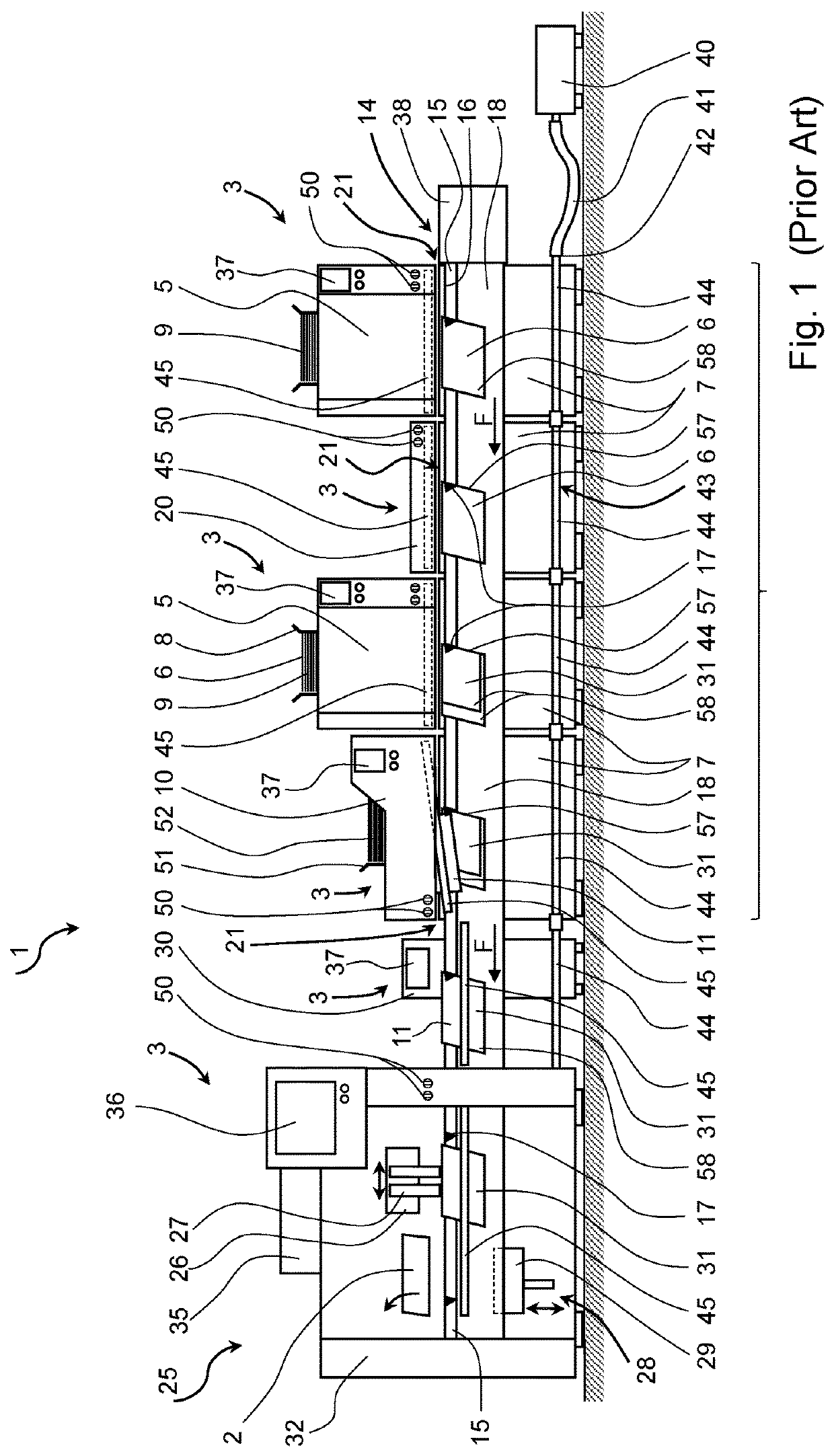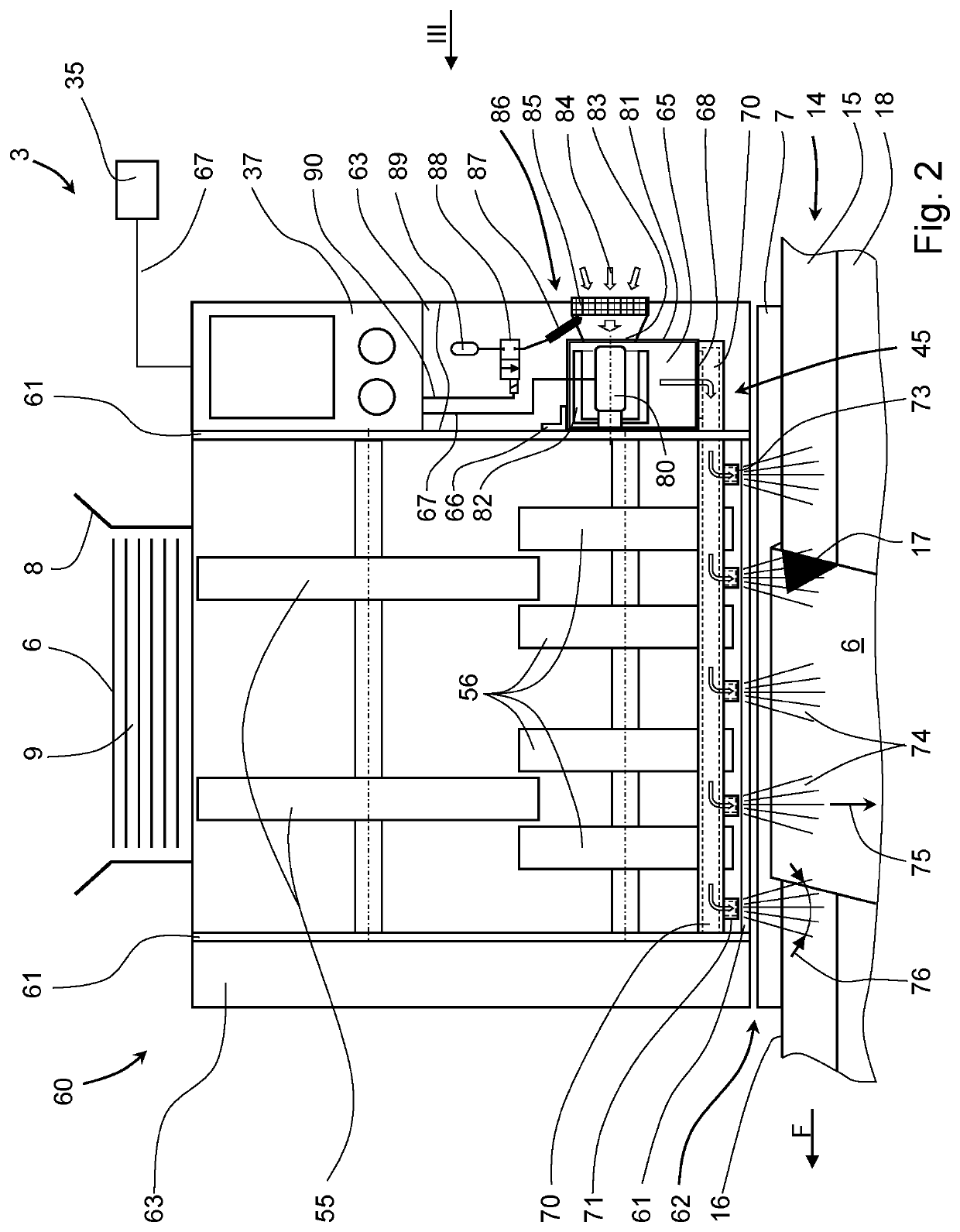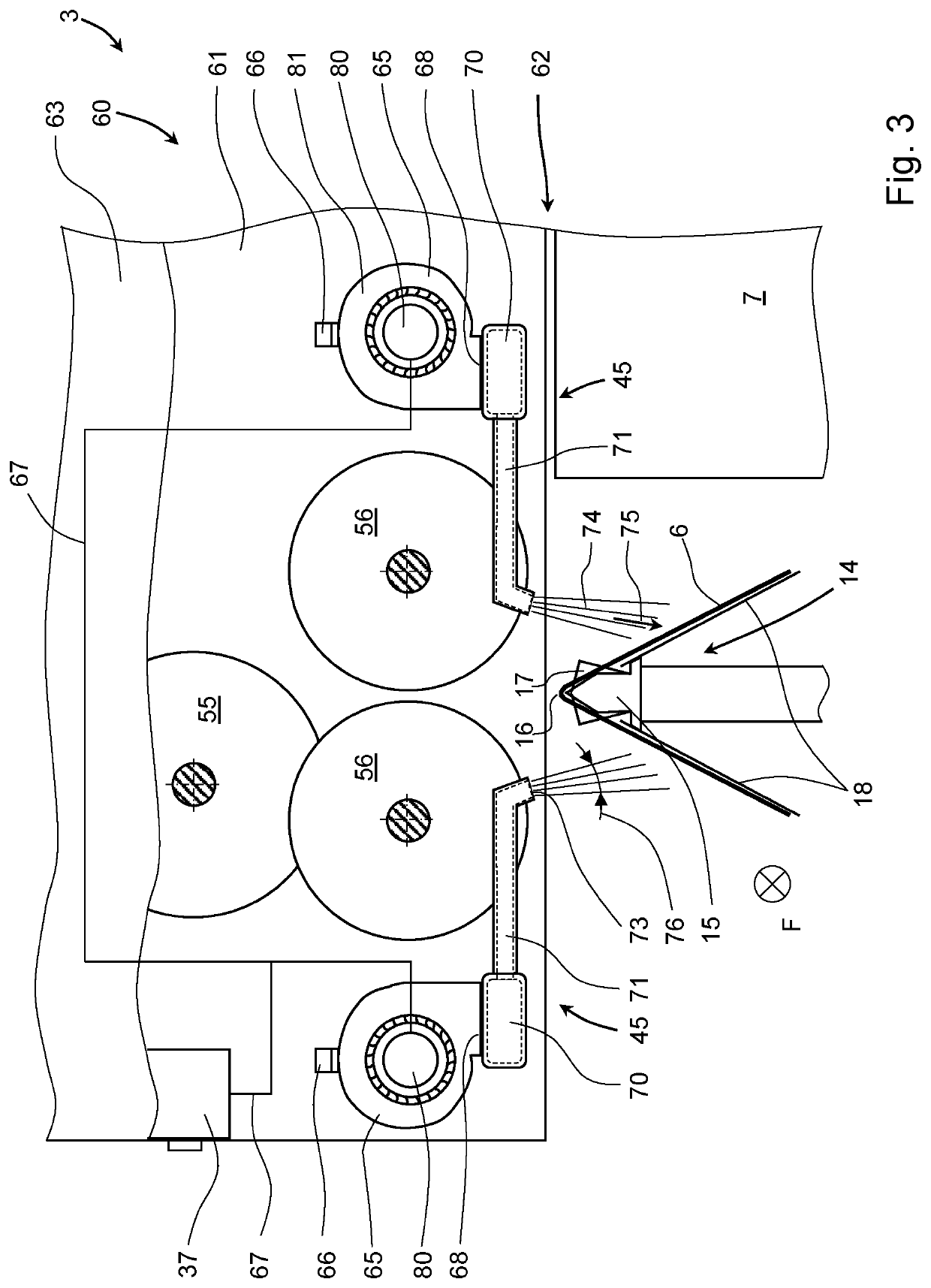Apparatus and Method for Producing Printed Products
- Summary
- Abstract
- Description
- Claims
- Application Information
AI Technical Summary
Benefits of technology
Problems solved by technology
Method used
Image
Examples
Embodiment Construction
[0031]FIG. 1 schematically shows an apparatus 1 according to the prior art, embodied as a gathering and stapling device, for producing printed products 2. A gathering and stapling device is comprised of individual devices 3 which are connected, for example mechanically, pneumatically, electrically, and / or via control lines. Sheet feeders 5 and other devices 3 for processing printed sheets 6 are arranged side-by-side along a gathering section 4. Conveying elements 14 transport the printed sheets 6 and all intermediate products up to the finished printed product 2 with the apparatus 1 to the location where they are transferred to a following apparatus. In the field of post-print processing, the terms processing or handling refer to all operating steps relating to the printed sheets, for example transporting, conveying, rotating, turning, orienting, fixing, clamping, opening, closing, measuring, testing, counting, identifying, printing, stapling, applying adhesive, gluing, stamping, cu...
PUM
 Login to View More
Login to View More Abstract
Description
Claims
Application Information
 Login to View More
Login to View More - R&D
- Intellectual Property
- Life Sciences
- Materials
- Tech Scout
- Unparalleled Data Quality
- Higher Quality Content
- 60% Fewer Hallucinations
Browse by: Latest US Patents, China's latest patents, Technical Efficacy Thesaurus, Application Domain, Technology Topic, Popular Technical Reports.
© 2025 PatSnap. All rights reserved.Legal|Privacy policy|Modern Slavery Act Transparency Statement|Sitemap|About US| Contact US: help@patsnap.com



